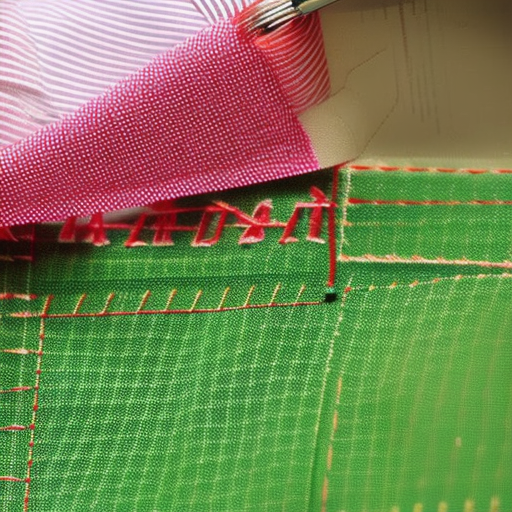
Introduction
Sewing is a wonderful craft that allows you to create beautiful garments and unique creations. However, it’s important to keep safety in mind while working with needles, scissors, and other tools that can pose risks if not handled properly. Here are some essential sewing safety tips to help you enjoy your sewing projects while minimizing the risk of accidents.
1. Maintain a Clean and Organized Workspace
Keep your sewing area clean and clutter-free. Store your tools, needles, and scissors neatly and securely when not in use. This reduces the risk of accidentally stepping on a needle or cutting yourself with sharp scissors.
2. Always Use Properly Maintained Equipment
Ensure that your sewing machine is well-maintained and in good working condition. Regularly clean the machine, change needles, and replace worn-out parts as needed. Faulty equipment can lead to injuries and poor quality sewing.
3. Protect Yourself with Safety Gear
When working with pins, needles, and scissors, wear safety gear such as finger guards or thimbles to protect your fingers. Use protective goggles if you’re using tools that could potentially cause eye injuries, such as rotary cutters.
4. Take Breaks and Maintain Good Posture
Sewing for prolonged periods can strain your eyes, back, and neck. Take regular breaks to stretch, rest your eyes, and maintain good posture. Adjust your chair, table, and sewing machine height to ensure a comfortable and ergonomic sewing experience.
5. Keep Children and Pets Away
When sewing, it’s important to create a safe environment by keeping children and pets away from your workspace. Needles, thread, and other small components can be hazardous if swallowed or stepped on accidentally.
6. Pay Attention to Electrical Safety
If you’re using sewing machines or equipment that require electrical power, be mindful of potential electrical hazards. Make sure your electrical cords are in good condition, away from water, and not tangled or exposed to prevent trips or electrical shocks.
7. Educate Yourself
Continually educate yourself about safe sewing practices. Stay updated with safety guidelines and new techniques. By expanding your knowledge, you can prevent accidents and stay informed about potential hazards.
Conclusion
By following these sewing safety tips, you can minimize the risk of accidents and injuries while enjoying your sewing projects. Remember, safety should always be a priority when it comes to any craft or hobby. So, keep these tips in mind and happy sewing!




